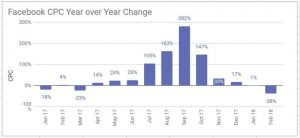If you’re just starting to implement a website monitoring tool to better understand and improve website performance, there are certain best practices you should take into consideration. Your website monitoring tool will tell you how quickly people engage with your website, what paths they take to navigate, and where errors occur—both for the user and on the website’s back end. To make the most of this information, you’ll need to fully understand how your website works, how your hardware figures into your website’s functionality, and how your code drives business actions.
I spoke with Bharath Gowda, Senior Director of Industry Marketing at Editors’ Choice web monitoring service New Relic, about what your company needs to do to ensure you’re ready to take full advantage of the data your monitoring tool provides.
1. Develop an Application-Infrastructure View
Your applications are built on code and that code drives business actions. For example, when someone searches for a product on an e-commerce website, or if they put something in their shopping cart, your code is allowing these actions to occur. As this code is changed, it interacts with your hardware infrastructure, impacting things such as memory and storage. These changes tend to break websites.
To ensure that your code updates don’t damage or slow down your website, and to make sure you’re properly monitoring your website’s performance, you’ve got to be able to determine acceptable baseline performance for back-end services, code, and your hardware infrastructure. Once all of those things are running according to plan, Gowda recommends you take a look at your app’s overall performance. Is everything running smoothly? Good, let’s move onto the next step.
2. Map the Customer Journey
Once you have a good idea of how your website is supposed to perform, determine what an acceptable customer journey looks like and how many customers your website can handle without experiencing latency. Is your website navigation helping you drive a business outcome? Are people consuming the content you want them to consume or are they getting lost and thrown onto the wrong path?
Once you’ve determined that the website’s navigation works smoothly, determine the number of visitors that won’t negatively effectively website navigation. Secondly, run tests to see if all of your pages are loading. Are products not landing in the shopping cart? Does the shipping page not load quickly enough? This kind of information is incredibly useful for understanding website performance but it’s also helpful for marketing and sales teams. By working with engineers to develop a path of least resistance, Gowda said your organization can adjust the website on a campaign-by-campaign or season-by-season basis.

3. Make Subteams Focus on Particular Services
Gowda recommends putting specific teams in charge of specific functions. We already know what your basic queries will be: How much traffic is coming through and is this expected or not? What is the error rate? What is the response time?
But, once you’ve got a solid understanding of how each of these things work, you want to be able to dig deeper into things such as geographies, the service map, your servers, and whatever else is impacting performance. This detailed approach will help you catch issues before they reach a critical level, and it will give you a deeper understanding of what can be adjusted to further improve website performance, Gowda said.
4. Construct Dashboards and Alerts
You need an alert mechanism that can pull you back into the app when you’re focused on other tasks. You need dynamic alerts that give you context and bring you back to the dashboard where the problem is occurring. Some products, such as New Relic, offer dynamic baselines that are established by using machine learning (ML), based off of historical and time-based metrics to automate the notifications process. So, your baseline will be a lot higher during Black Friday than it will be during off-peak months, and the tool will adjust itself accordingly.
These alerts are critical for users who aren’t glued to their website monitoring tool, Gowda said. Alerts can be delivered via text message, email, and even phone. Hopefully, the alerts will give you enough context and direction to drive you back to the exact spot within the tool where issues need to be addressed.
5. Meet Often
Don’t just wait for things to break. When you launch new products, go into new markets, or prepare for heavy-traffic periods, get together with product, operations, and engineering teams to make sure everyone is aware of the plan and happy with how the website is set up. Gowda advises companies to make pre- and post-event meetings mandatory, but he said you should also institute monthly meetings at which everyone can come together to check in and address questions and concerns.

(40)
Report Post





